Panasonic Z90B vs LG C5: which 48-inch OLED TV should you buy?
Two excellent compact OLEDs with very different strengths – we pit them head-to-head to find out which deserves your money
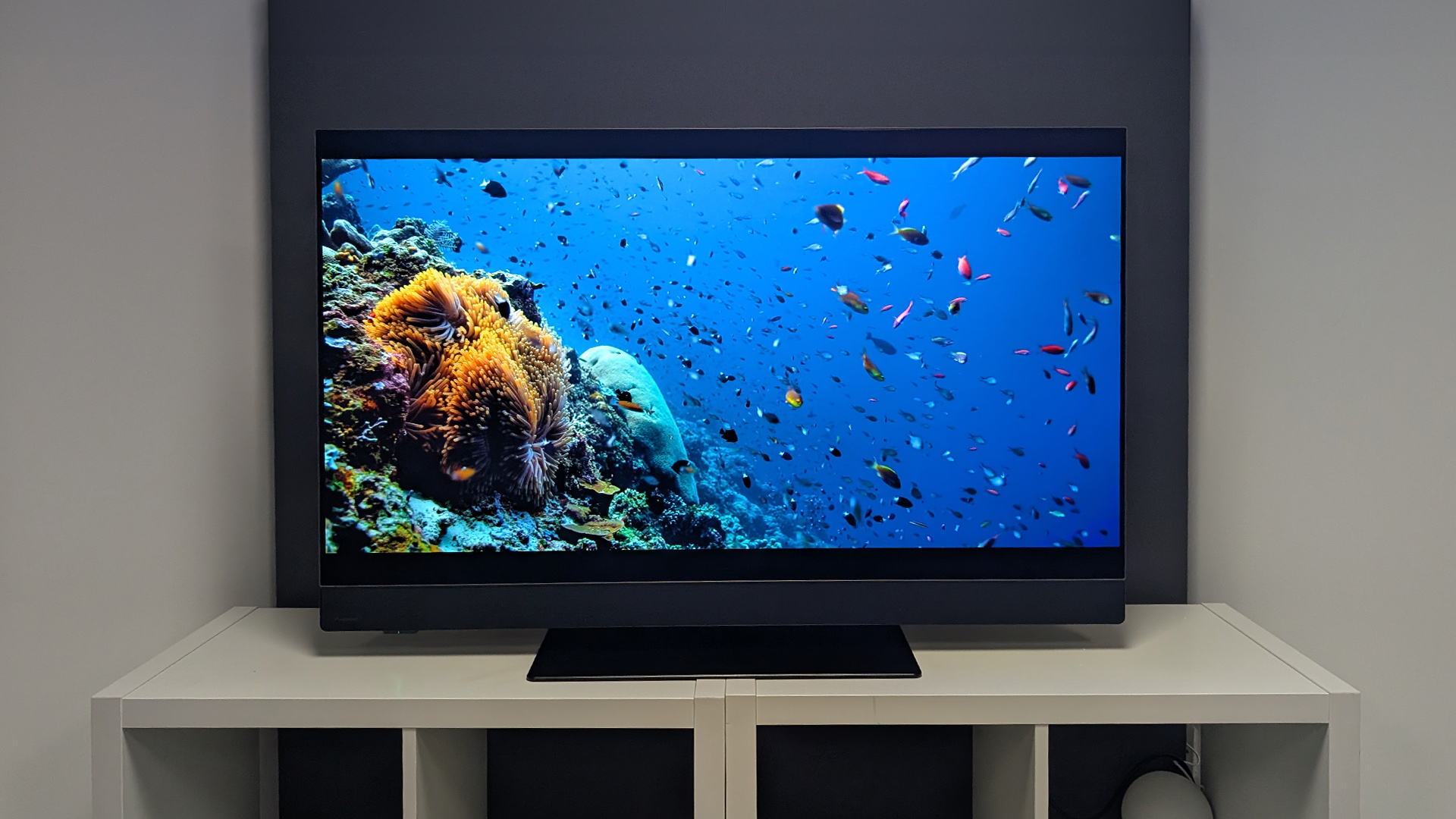
If you're hunting for one of the best TVs to fit a smaller space without sacrificing premium picture quality, you’re probably thinking along the lines of a 48-inch OLED.
The best OLEDs at this size deliver movie night performance in a compact package, at a price point that’s cheaper than their 55-inch+ siblings.
Enter the What Hi-Fi? 2025 Award-winning 48-inch Panasonic Z90B and LG C5 – two of the most accomplished options at this size, both of which earned a well-deserved five stars.
We've thoroughly reviewed both models in our dedicated test rooms, so you can rest assured that the comparison below will see you in good stead. With that said, let’s jump straight in.
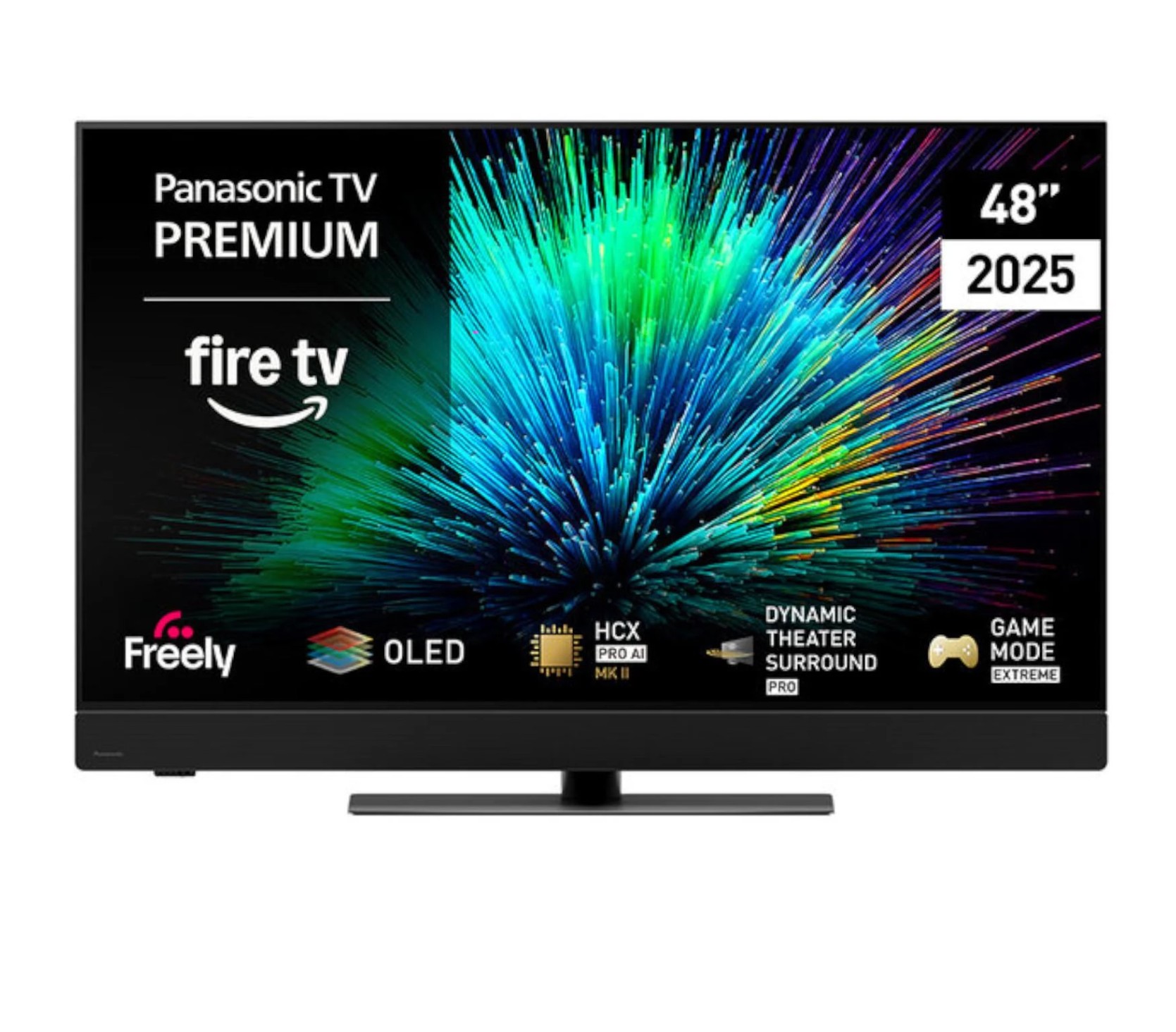
Screen sizes: 48 inches (also available in 42, 55, 65 and 77 inches)
Type: OLED
HDMI inputs: x 4 (2 x 48Gbps HDMI 2.1)
Gaming features: 4K/144Hz, VRR, ALLM
Dimensions (hwd, without stand): 68 x 107 x 5.8cm
The Z90B delivers exceptional colour accuracy and the most authentic cinematic presentation at 48 inches, with a heatsink enabling sustained brightness control and the best integrated audio in its class. It wins on picture quality and sound, but loses on connectivity with only two HDMI 2.1 ports, and a bulky speaker bar that complicates soundbar placement.
Pros
- Authentic picture
- Support for all HDR formats
- Excellent app selection
Cons
- Occasional slight lack of shadow detail
- Retro remote
- Middling upscaling
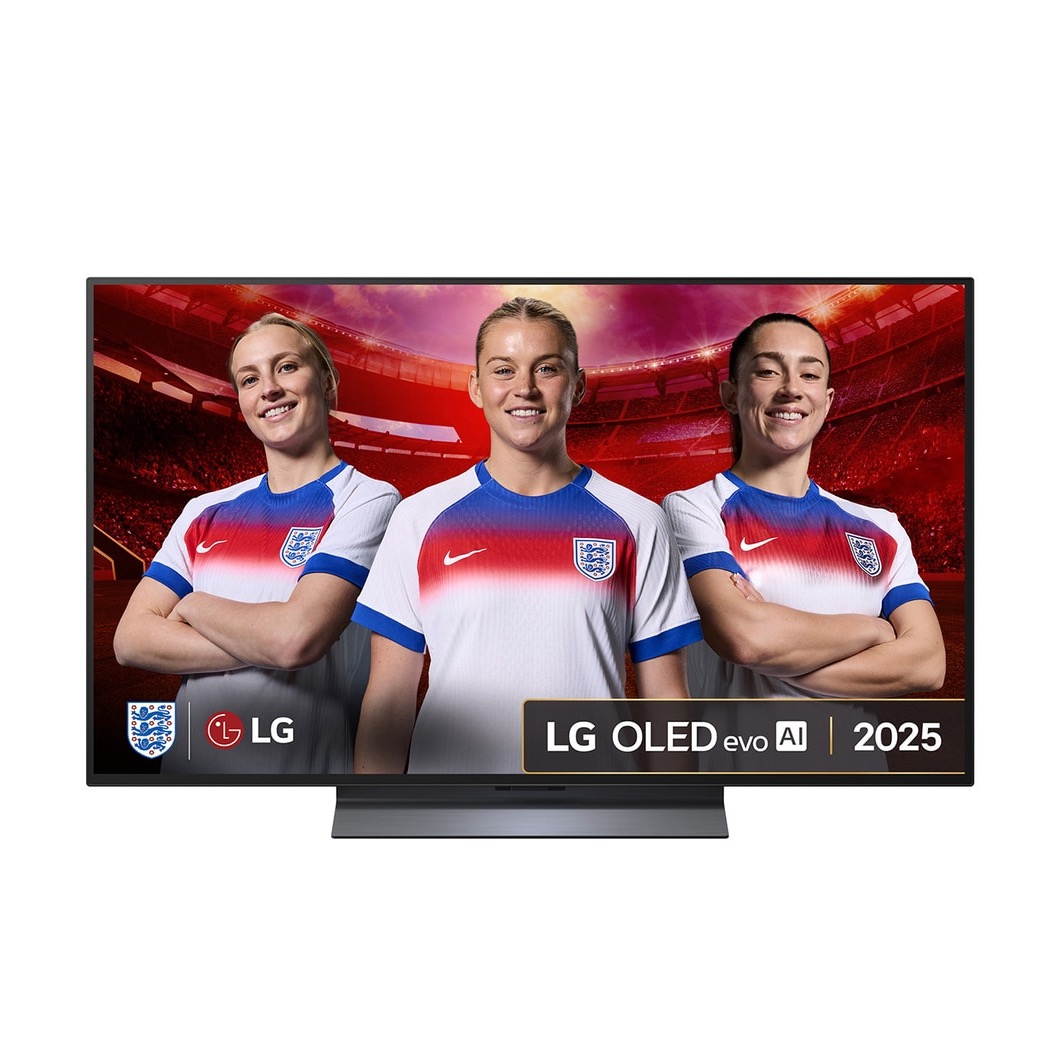
Screen sizes: 48 inches (also available in 42, 55, 65, 77 and 83 inches)
Type: OLED
HDMI inputs: x 4 (4 x 48Gbps HDMI 2.1)
Gaming features: 4K/120Hz, 4K/144Hz, VRR, ALLM, Dolby Vision game mode, HGiG
Dimensions (hwd, without stand): 62 x 107 x 4.7cm
The C5 excels at versatility with four full-speed HDMI 2.1 inputs, comprehensive gaming features including Dolby Vision gaming, and a mature webOS platform. It wins on features and design practicality, but requires extensive calibration to overcome inconsistent colour volume issues and delivers underwhelming audio, making a soundbar essential.
Pros
- Bright picture
- Flawless gaming specifications
- Excellent app support
Cons
- Not much of an upgrade on the C4
- Some picture inconsistencies
- Below average audio
Panasonic Z90B vs LG C5: price
The 48-inch Panasonic Z90B launched at £1500 in the UK (no such luck for those in the US or Australia), positioning it slightly higher than the £1399 48-inch LG C5's launch price.
At the time of writing, both sets are available for a discounted price, with the Z90B at £1099 and the C5 at £1049. With such close pricing, it’s all to play for…
** Winner: Draw **
The latest hi-fi, home cinema and tech news, reviews, buying advice and deals, direct to your inbox.
Panasonic Z90B vs LG C5: design and build
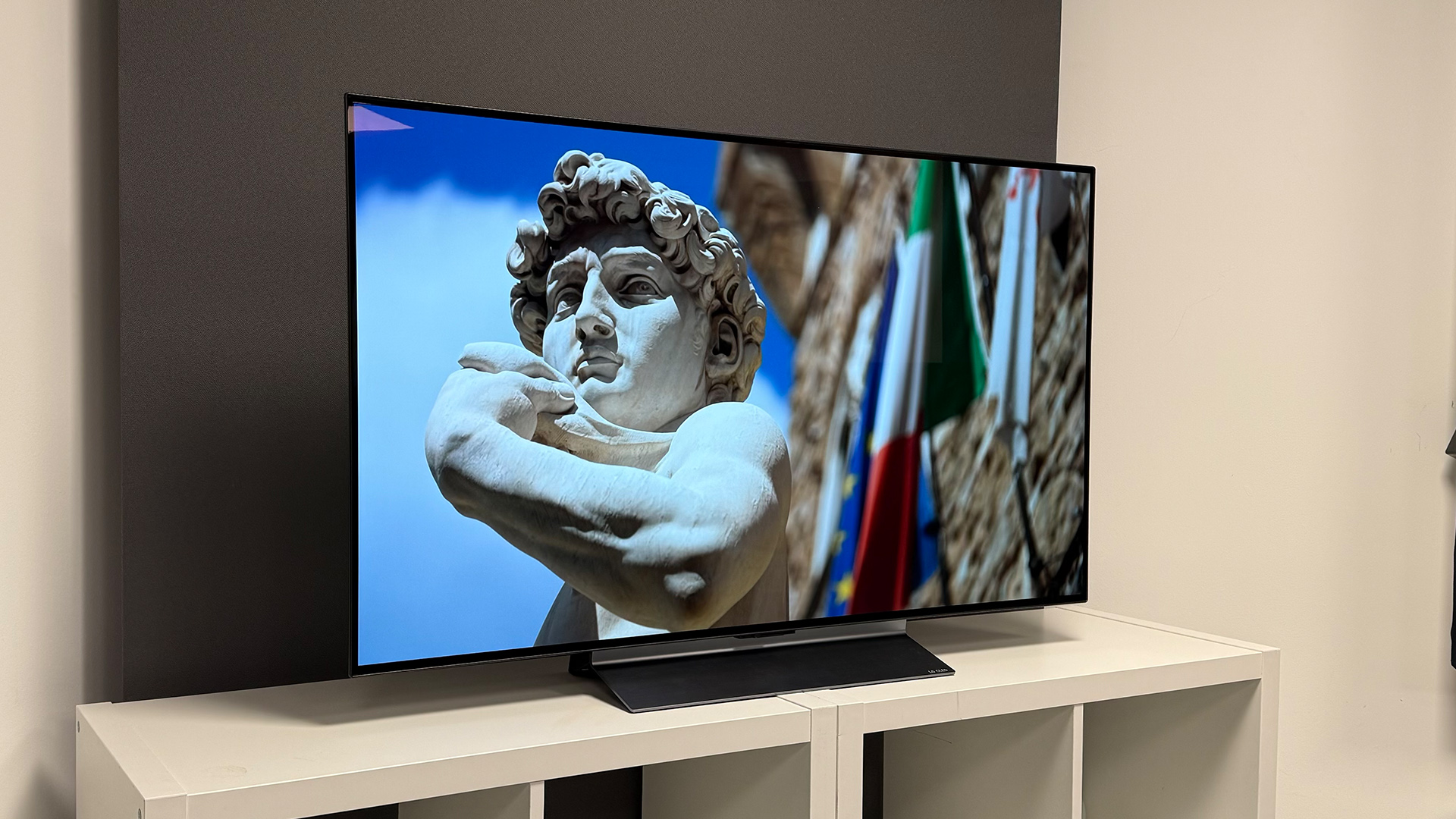
The Panasonic Z90B doesn't deviate from the company's established OLED design language, which brings both advantages and frustrations.
The panel itself is slim enough for flush wall-mounting, and the 48-inch model uses a large rectangular metal stand that feels reassuringly sturdy – reassuring enough that our testers described it as toddler- and pet-proof. Always a bonus.
What the stand doesn't offer, is a swivel mechanism – an omission that proves mildly irritating if you need to adjust viewing angles. A smaller footprint would help too, particularly for narrower TV units.
The real sticking point, though, is its speaker bar. Bolted to the television's base, it's essentially a permanently attached soundbar that Panasonic insists removes the need for separate audio equipment.
Whether you agree with that assessment or not (and we don't), the bar becomes an active nuisance if you already own a soundbar, as it complicates placement considerably.
The remote control follows Panasonic's traditional approach – large, button-heavy, with shortcuts to every conceivable app and feature, but lacking refinements such as backlighting, solar charging, or USB rechargeability. It's functional but feels distinctly old-fashioned.
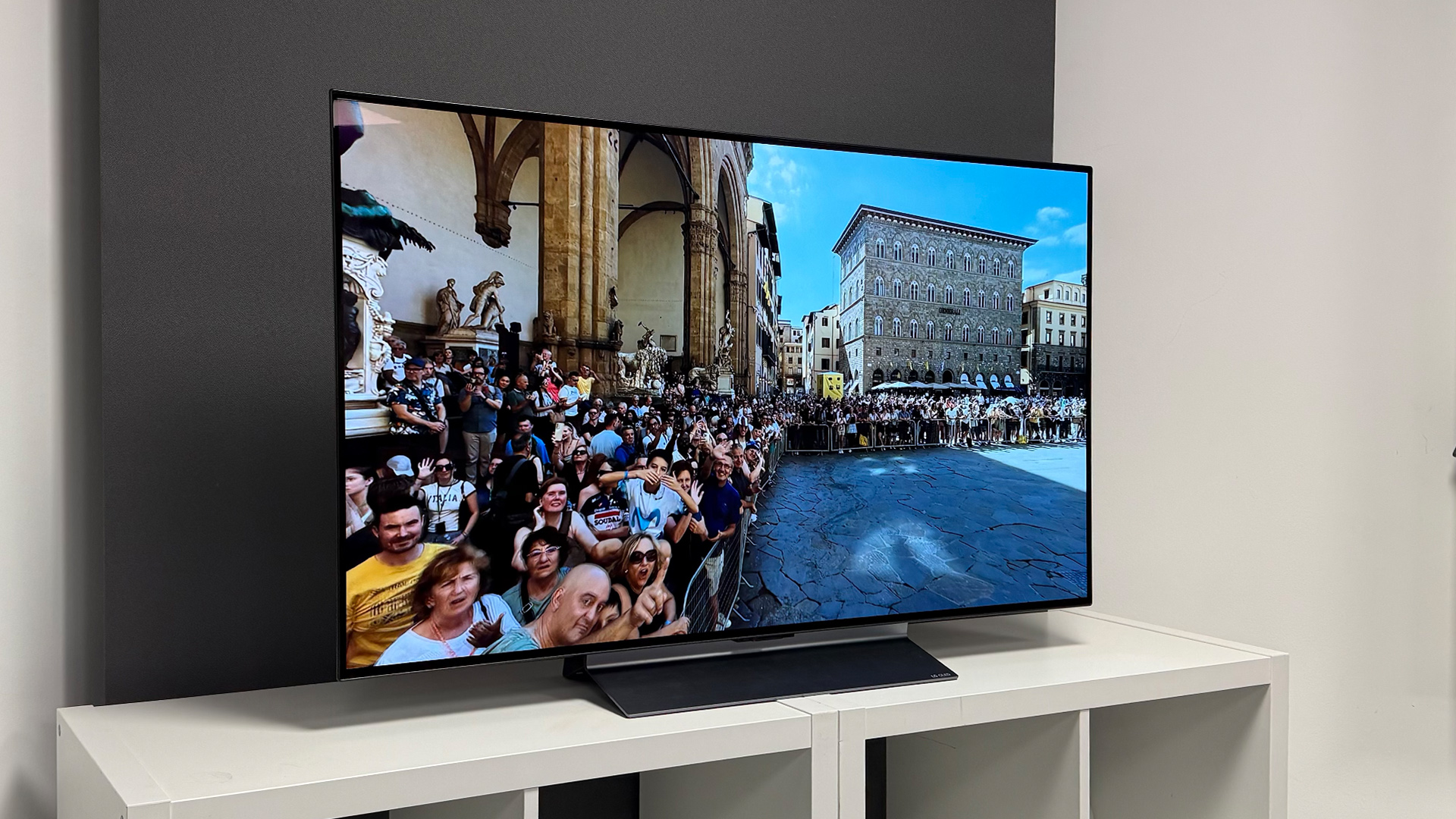
The LG C5, meanwhile, sticks equally closely to past designs. Place it beside 2022's C2, let alone last year's C4, and you'd struggle to spot a difference. The 48-inch model inherits the central stand design from its larger siblings, which assembles quickly and securely with minimal fuss.
Unlike its smaller 42-inch sibling, the stand doesn't swivel either, though this matters less since most ports sit on the television's side rather than its rear, making access reasonably straightforward.
What does matter., though, is the stand's angled slant and low height, which can create headaches when positioning a soundbar. You'll want a particularly low-profile model – something like the Sonos Beam (Gen 2) – if you go down that route.
Elsewhere, in the US and many other countries, LG has released a sleek, modernised controller for the C5. UK buyers, however, get a marginally tweaked version of the long-serving Magic Remote instead.
That remote gains a new AI shortcut button and a modified input button that can control connected smart home devices, rather than just cycling HDMI sources.
The pointer functionality remains – letting you navigate menus with an on-screen cursor controlled by motion – but the controller feels clunky in low light, which is when most serious film enthusiasts use their televisions. The lack of backlighting and rechargeable batteries feels increasingly dated compared to rival OLED remotes as well.
** Winner: LG C5 **
Panasonic Z90B vs LG C5: screen and picture quality

Both televisions use regular WOLED panels rather than the newer Primary RGB Tandem OLED technology that debuted earlier this year.
The brightness-boosting Micro Lens Array (MLA) tech that appeared on previous-generation flagships has been retired rather than trickling down to these step-down models, heading to the same ethereal dimension filled with curved screens and 3D.
The Panasonic distinguishes itself with a heatsink – a feature we've wanted to see on smaller OLEDs for years.
Tightly packed pixels on 48-inch panels mean these sets heat up more readily than their larger siblings, which traditionally forces manufacturers to tune them conservatively. The heatsink should allow Panasonic to push harder without risking burn-in or panel degradation.
Processing duties fall to Panasonic's HCX Pro AI Processor MKII in the Z90B, while the LG employs its newer Alpha 9 Gen 8 chipset. Both focus heavily on AI enhancement, though they apply their computational muscle differently.
Fire up Dune: Part 2 on the Panasonic, and the difference in philosophy becomes immediately apparent. Even in its imperfect out-of-the-box settings, the Z90B displays more restraint than most rivals. The desert retains proper colour accuracy – just a touch too warm rather than aggressively oversaturated.
Peak highlights get pushed slightly harder than ideal, particularly in scenes mixing bright and dark elements, but nothing like the artificial punch that competing sets deliver. Motion handling proves the main culprit, with excessive smoothing making Fremen fighters appear to float rather than lunge with violent intent.
Switch to Filmmaker Mode, and the transformation is remarkable – almost everything falls into place without further adjustment. This preset turns off the unnecessary processing that plagues the default settings, revealing the Z90B's true capabilities.
Colours become the standout strength. The scorching desert tones hold their warmth and richness without ever tipping into exaggeration. Background dunes retain subtle shades of red and orange that rival sets reduce to pure white, while skin tones maintain their natural colour volume even in the dimmest lighting.
There's a wonderful range of hues across both the brightest and darkest parts of the image too, with each area packed with detail that never feels artificial or forced. This isn't achieved through aggressive brightness – the Panasonic runs dimmer than most competitors 99 per cent of the time, but it reserves its efforts for moments that demand it.
During Civil War's night-time battle scene, the Z90B produces peak highlights every bit as bright and detailed as pricier rivals, but because it chooses to focus selectively, those bright elements hold a distinct, realistic place within the frame, adding three-dimensionality rather than superficial pop.
Looking at a White House chandelier, every bauble remains visible and sharp, with a wide gamut in the burning bulbs that many competing sets simply render as white.
This approach does, however carry trade-offs. Switch to Alien: Romulus's opening, and while blacks are properly inky with stars shining menacingly from the void, the emerging spacecraft takes longer to fully reveal itself. The intentionally low brightness means details hiding in shadow require more effort to discern – they're there, but more thoroughly veiled than on brighter sets.
SDR upscaling with True Grit proves similarly conservative. The opening scene is extraordinarily dark, with some porch details visible on rival sets appearing completely black here. Falling snow lacks definition and all but vanishes against the darkest picture areas.
A brighter town scene improves matters, but the SDR performance doesn't quite deliver the dynamic range or detail retrieval that competitor sets manage. Colours remain accurate and the picture stays free of artefacts, but it's an area where the Z90B isn't leading its class.
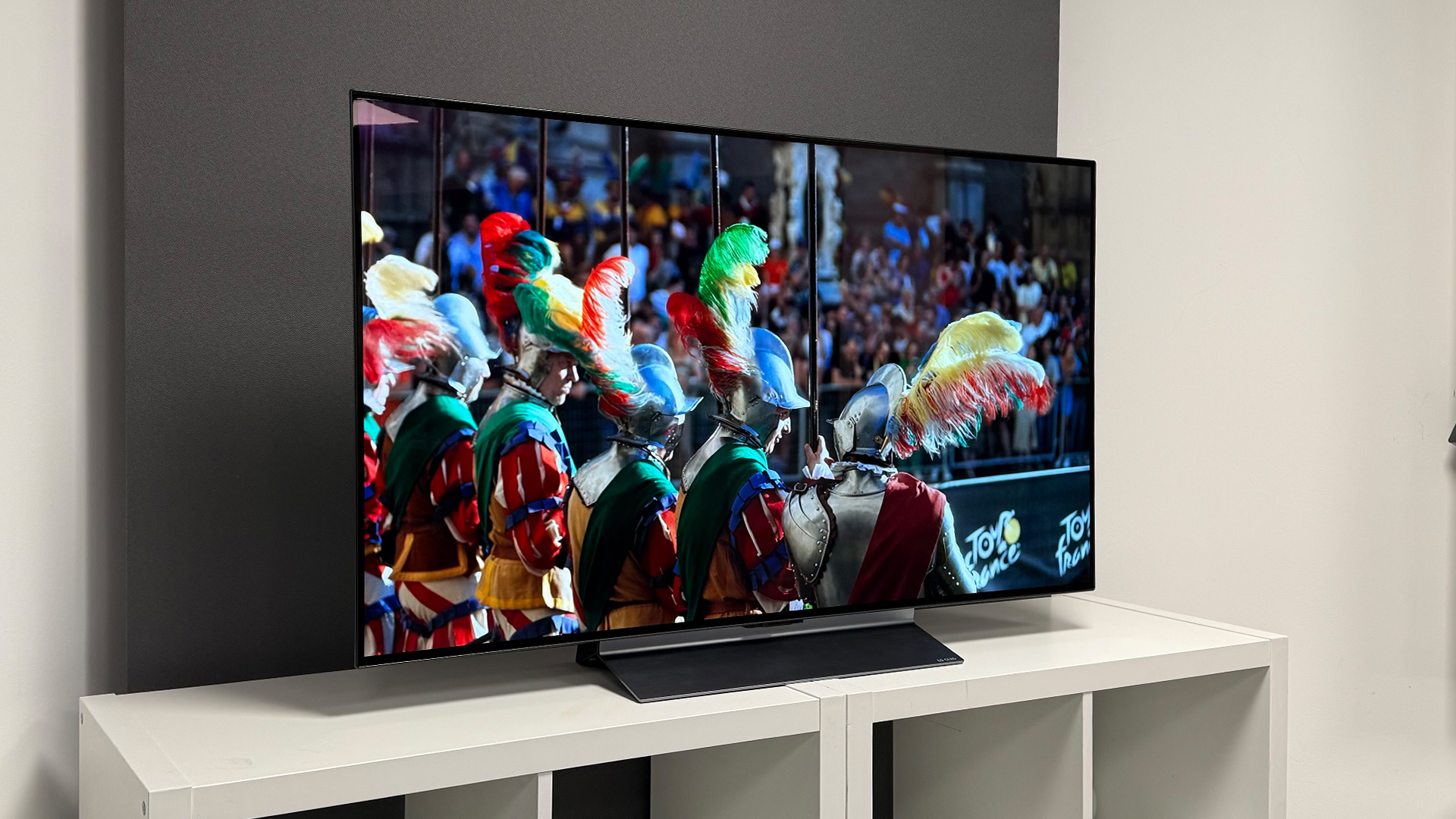
The LG C5 tells a rather different story. Powering it up reveals a television that tries too hard in its standard settings. Peak bright areas in Dune: Part 2's desert scenes stand out excessively as the set attempts to demonstrate its capabilities, while colours skew too warm. Motion handling is heavy-handed, with fighters resembling dancing ballerinas rather than aggressive knife-wielding warriors.
Extensive settings adjustment is required – eventually settling on Filmmaker Mode with the lowest Cinematic Movement option enabled, sharpening and judder reduction disabled, and dynamic tone mapping activated. The colour temperature slider (now offering more granular control than before) stays at its Filmmaker Mode default.
Properly configured, the desert retains its sparkle with bright sky sections shining in ways OLEDs from even a few years ago couldn't manage, but with significantly more detail. Bright shading is strong, with a wonderful transition from blue to orange across the frame.
Cloud clusters hold their shape despite the added brightness, showcasing the advantage of pixel-level light control. The only niggle is that colour temperature still looks fractionally too cool, though it shifts too far in the opposite direction with minor adjustments.
Motion handling regains its composure, with on-screen characters moving with their intended weight. A difficult scene where a Fremen fighter launches a missile at an Ornithopter looks accurate, free from ghost frames or awkwardness.
Civil War's heated night-time battle reveals a weakness, though. Explosions look dynamic and pop from dark sections with zero bloom – as expected from OLED – but colour volume drops noticeably, especially in skin tones.
This becomes particularly apparent in close-ups. While the brightest parts of faces look wonderfully three-dimensional with plenty of pop, darker areas take on a greenish hue, losing all warmth and resulting in a flatter, less natural image than we'd like.
The set otherwise handles dark scenes admirably. Alien: Romulus's opening shows a giant spacecraft creeping from the pitch-black vacuum of space, with every nook and cranny of the vessel on display, creating a wonderfully three-dimensional spectacle.
Top Gun: Maverick's skyline looks excellent again – full of pop and detail – but shadow areas of the aircraft carrier appear slightly flat, losing definition that looks sharp on the Samsung S90F tested alongside it.
Curiously, Oppenheimer doesn't repeat the issue during a shadow-heavy political meeting scene. Skin tones look natural, and the entire picture has a sharp, wonderfully three-dimensional quality with every suit stitch visible.
The SDR True Grit upscaling test produces solid results. During the tricky opening, dark lights in the farm hold nicely bright, distinctive spots, with the glow illuminating details without introducing noise or oversharpening the fluffy falling snow.
The intentional spaghetti western grain is retained during brighter scenes, with the set avoiding the temptation to oversharpen or flatten this very difficult picture.
Overall, the LG C5 displays a couple of niggling picture issues – particularly that inconsistent colour volume in darker skin tones – but it's superbly competent overall. Many users won't notice those issues at all, and when properly calibrated, it delivers impressive performance across a wide range of content.
Ultimately though, the Panasonic's exceptional colour accuracy, natural handling of brightness, and authentic cinematic presentation make it the superior option for picture quality – despite the LG's impressive capabilities when properly configured.
** Winner: Panasonic Z90B **
Panasonic Z90B vs LG C5: features and processing
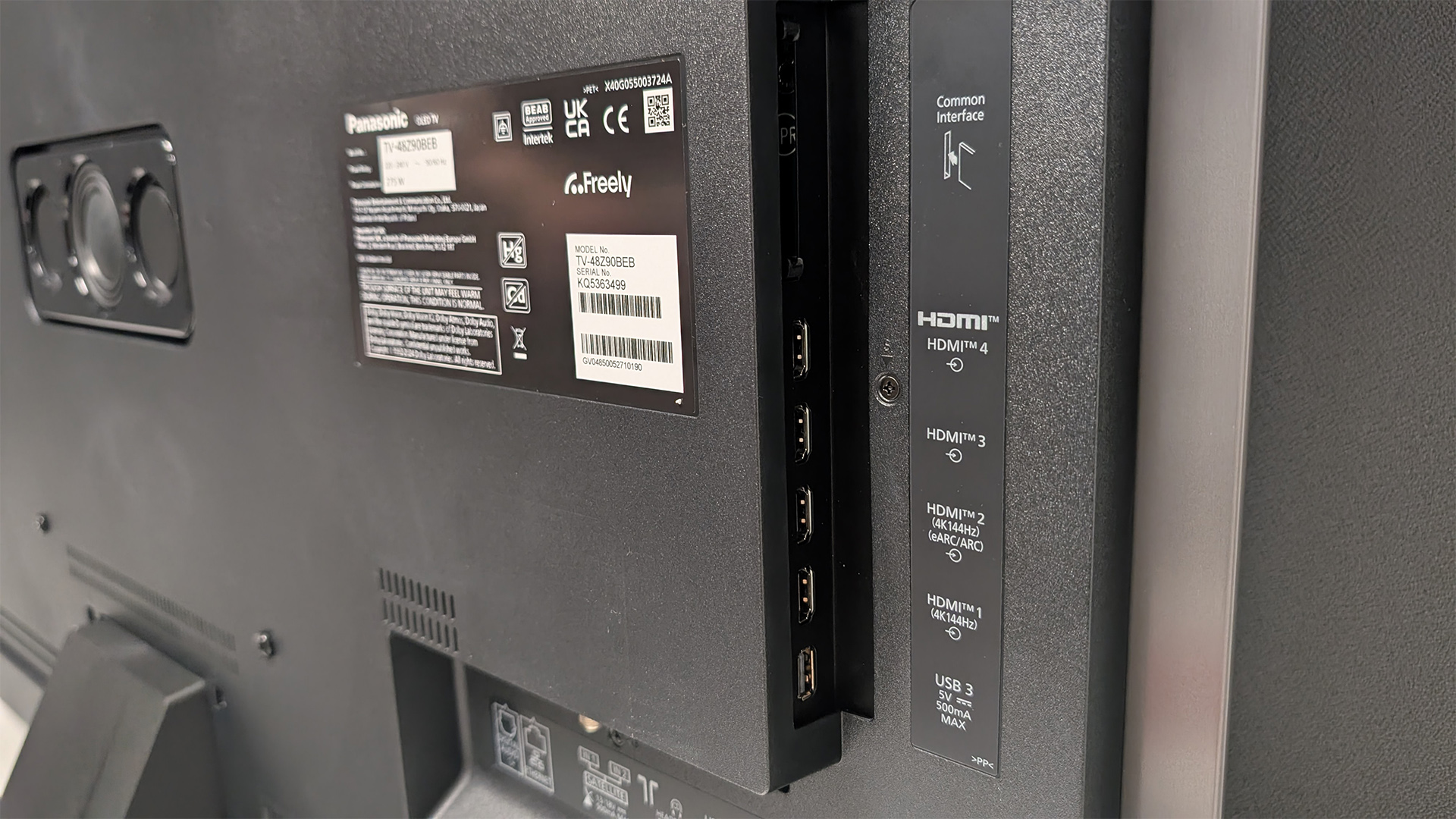
The Panasonic Z90B covers HLG, HDR10, HDR10+ and Dolby Vision, with the HDR10+ Adaptive and Dolby Vision IQ variants also supported for ambient light optimisation.
The LG C5 supports HLG, HDR10, and Dolby Vision, but lacks Samsung's open-source HDR10+ format. While HDR10+ and Dolby Vision are rival standards with similar frame-by-frame dynamic range optimisation goals, Dolby Vision content remains the more common choice across streaming services.
Gaming features reveal the most significant practical difference. The LG C5 offers four full-speed HDMI 2.1 inputs, while the Panasonic Z90B provides just two. For anyone with multiple current-generation consoles and a Dolby Atmos soundbar (which requires the eARC port), the LG's advantage can’t be overlooked.
That eARC limitation on the Panasonic becomes frustrating if you own a PlayStation 5, Xbox Series X/S, and gaming PC – all of which need HDMI 2.1 to run at full speed. You'll be swapping cables regularly, which rather defeats the purpose of having multiple devices connected simultaneously.
Both televisions max out at 4K/144Hz, faster than current-generation consoles' 4K/120Hz cap. VRR and ALLM feature on both, matching framerate to incoming signals and reducing latency. The Panasonic also adds an option to let your gaming source handle HDR tone-mapping directly, while the LG includes Dolby Vision gaming support – particularly useful for Xbox Series X/S owners.
The LG also debuts an Xbox app, allowing direct game streaming from the television with Bluetooth controller pairing.
Panasonic's new Game Control Board quick menu lets you access performance stats and tweak settings mid-session, matching similar implementations from competitors. So while the HDMI situation creates real limitations, the actual gaming experience on either television should prove excellent when connected.
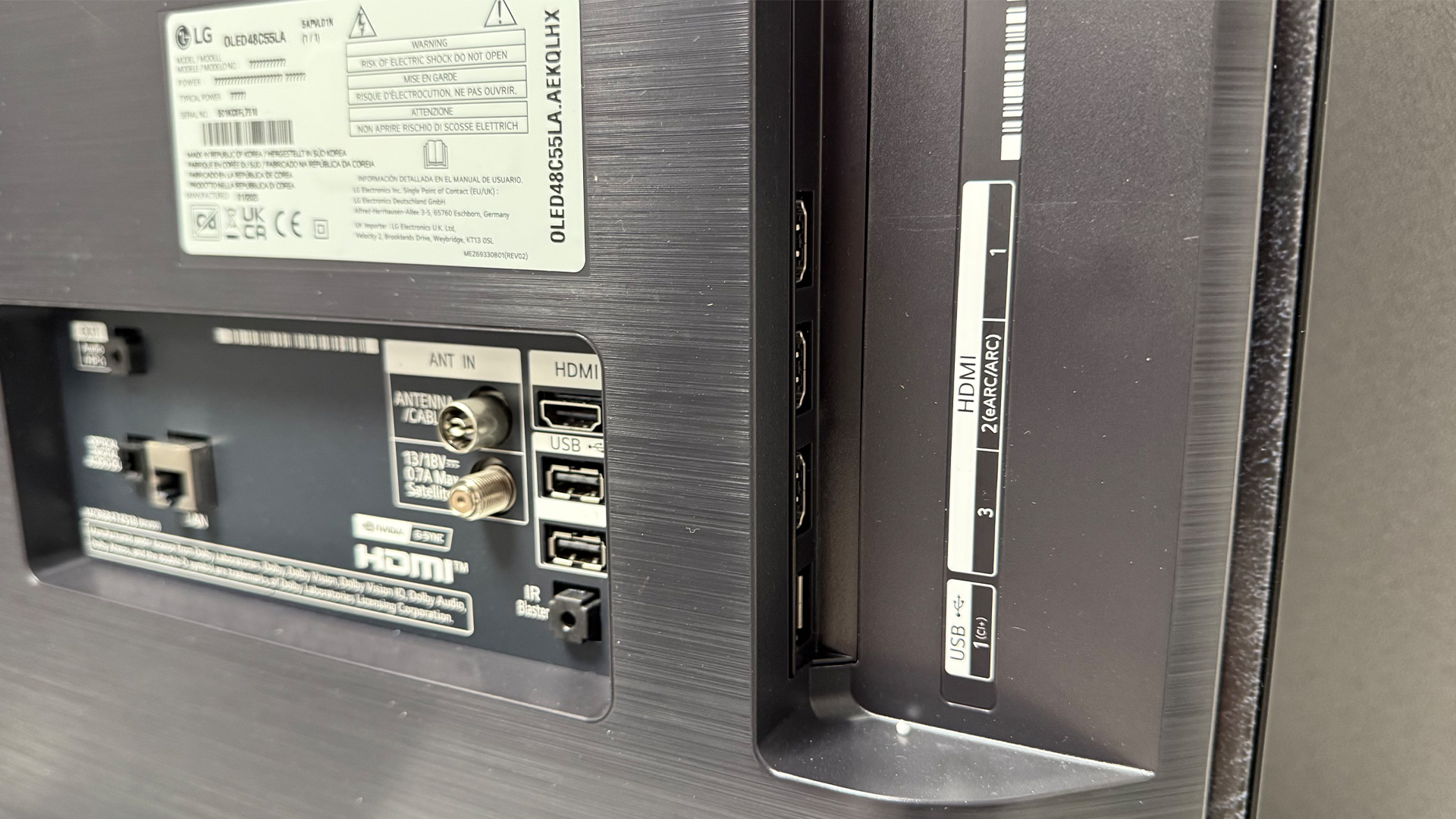
On the OS front, the Z90B runs Amazon's Fire TV OS, delivering excellent app support with Apple TV+, Disney+, Netflix, Amazon Prime Video, BBC iPlayer, ITVX, Freely, Shudder, and Crunchyroll all present and functioning correctly.
The interface remains somewhat ad-heavy though, and doesn't always clearly distinguish free from paid content, but navigation is straightforward and responsive. Specialist services and local catch-ups all receive proper support.
LG's webOS 25 is largely similar to last year's iteration, with the main additions being the Xbox app and an AI assistant for troubleshooting and settings adjustment via voice commands. Through vocal commands, you can tweak picture settings and query what specific toggles do.
The OS maintains strong app support, with key services including Netflix, Disney+ , Apple TV+, Amazon Prime Video, BBC iPlayer, and ITVX all supported and running correctly. It's a mature, refined platform that makes finding and launching content intuitive.
As for hardware, Panasonic's HCX Pro AI Processor MKII features a 4K Remaster Engine for upscaling and a new Amazon Prime Video Calibrated picture setting – similar to modes Sony added to its 2024 range. This complements the set's standard Filmmaker Mode.
The Panasonic also continues its partnership with Portrait Displays, meaning the Z90B can be Calman calibrated with relative ease if you have the equipment and technical knowledge.
The LG's Alpha 9 Gen 8 processor, meanwhile, focuses its AI capabilities on upscaling, colour accuracy, audio quality, and HDR tone mapping improvements
Both processors represent evolutionary rather than revolutionary updates, with AI enhancement being the common thread across all 2025 television chipsets.
Overall, the LG’s four HDMI 2.1 inputs will make it a clear winner for those requiring multiple HDMI 2.1 connections.
While both sets offer excellent gaming features and smart platforms, the LG's connectivity advantage matters significantly for anyone with multiple devices, making it the more practical choice for many, despite Panasonic's broader HDR support.
** Winner: LG C5 **
Panasonic Z90B vs LG C5: sound

The Panasonic Z90B's Dynamic Theatre Surround Pro speaker system is a 60W, 2.1 arrangement with the subwoofer housed on the television's rear, and two front-facing speakers bolted to its base. No up-firing drivers feature, despite Panasonic marketing it as delivering a proper Dolby Atmos experience.
Does it deliver an audiophile experience? Not remotely. But it comfortably outclasses every other 48-inch OLED tested this year in terms of audio performance, which is nothing to be sniffed at.
There's a sense of direction as gunfire travels left and right across the screen during Civil War, with noticeably more low-end heft and volume than competitors manage. Explosions offer genuine rumble even at moderate volumes.
Oppenheimer demonstrates reasonable separation between background noise and characters' voices, making conversations easy to follow even during scenes with heavy low-end background sound.
The system isn't without flaws though. The subwoofer adds heft but lacks precision – thundering fighter jets in Top Gun: Maverick sound too flabby, with the sonic boom missing the precise impact it deserves.
Higher-level engine noises show the front drivers are slightly underpowered, with distortion creeping in and upper frequencies taking on an acidic, unpleasant tone at high volumes.
Still, this remains the best audio performance you'll encounter on an OLED this size, though it falls short of what could be described as truly immersive. It also makes that integrated speaker bar somewhat justified, even if it remains a frustration for those who already own separate audio equipment.
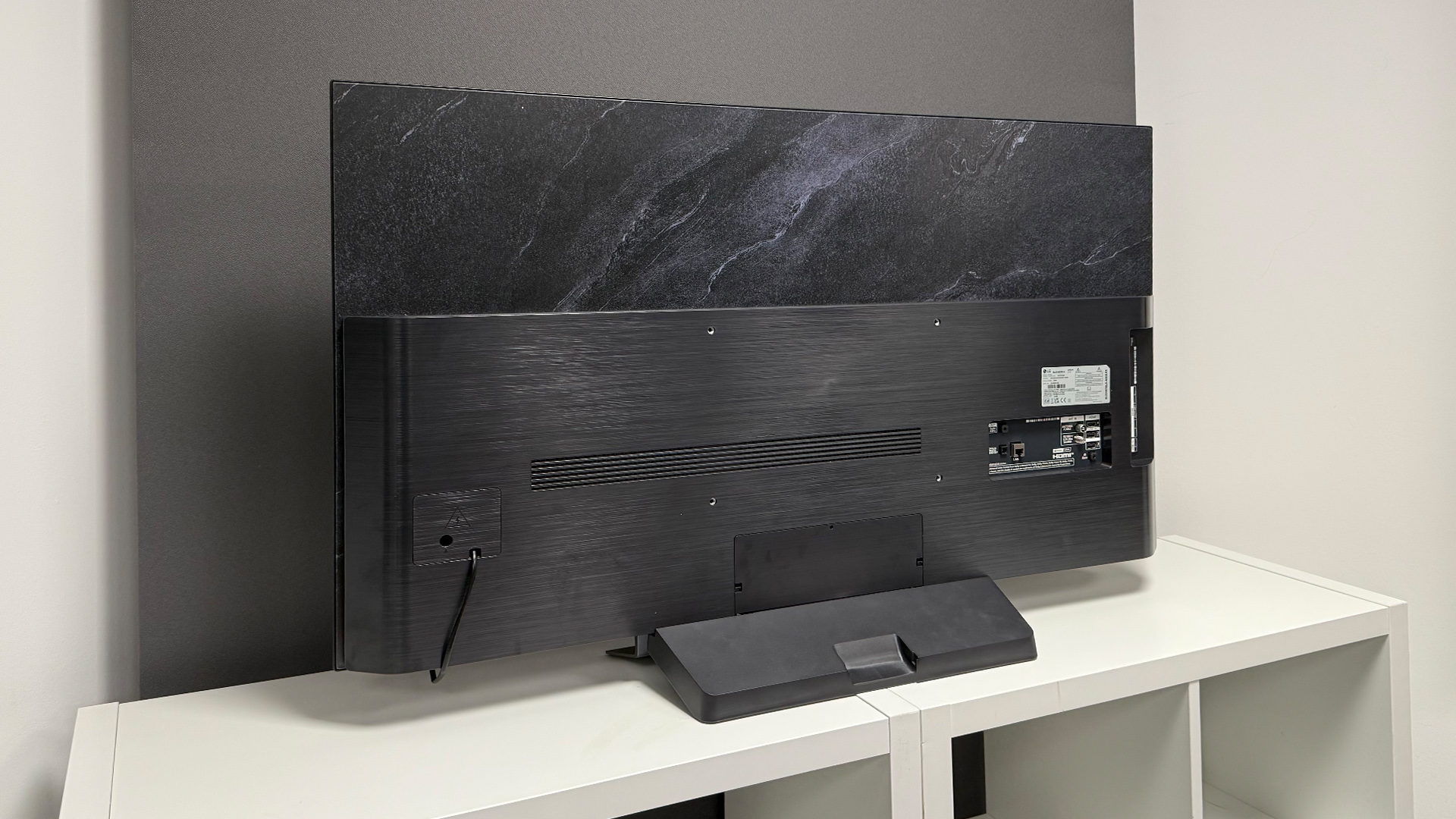
The LG C5 features the same 2.2-channel 40W speaker system as the outgoing C4, and on a set this size, audio quality inevitably becomes one of the main compromises.
Smaller dimensions impact how much air speakers can move, and the C5 confirms this limitation. In standard audio mode, performance is distinctly flat, with every sound originating from the screen's centre. Gunfire and soldiers' shouts during Civil War lack their intended directional quality.
Gunfire never sounds as acidic as it does on the Samsung S90F, but it lacks the expected bite, while distant explosions show the low end doesn't quite have the necessary heft to deliver the intended bone-rumbling effect.
Switching to the AI audio mode – which LG makes considerable noise about (pun intended) – doesn't fix things. This mode requires clicking through a process, picking options that describe your preferences before optimising speakers accordingly.
The set noticeably tries to separate the frequency range more, but makes each part thin in the process. Gunfire takes on a nasal, fizzy quality, sibilance creeps into dialogue, and the low end all but disappears.
Cinema mode produces the best results, but even then, audio lacks definition. Top Gun: Maverick's intense sequences remain flat, with jet engine booms lacking precision and directionality. Voices aren't properly separated from background noise, making some conversations difficult to follow.
Snapping up one of the best soundbars becomes essential for any serious film enthusiast considering the LG C5 – which, ironically, makes Panasonic's integrated speaker bar seem less objectionable by comparison.
** Winner: Panasonic Z90B **
Panasonic Z90B vs LG C5: verdict
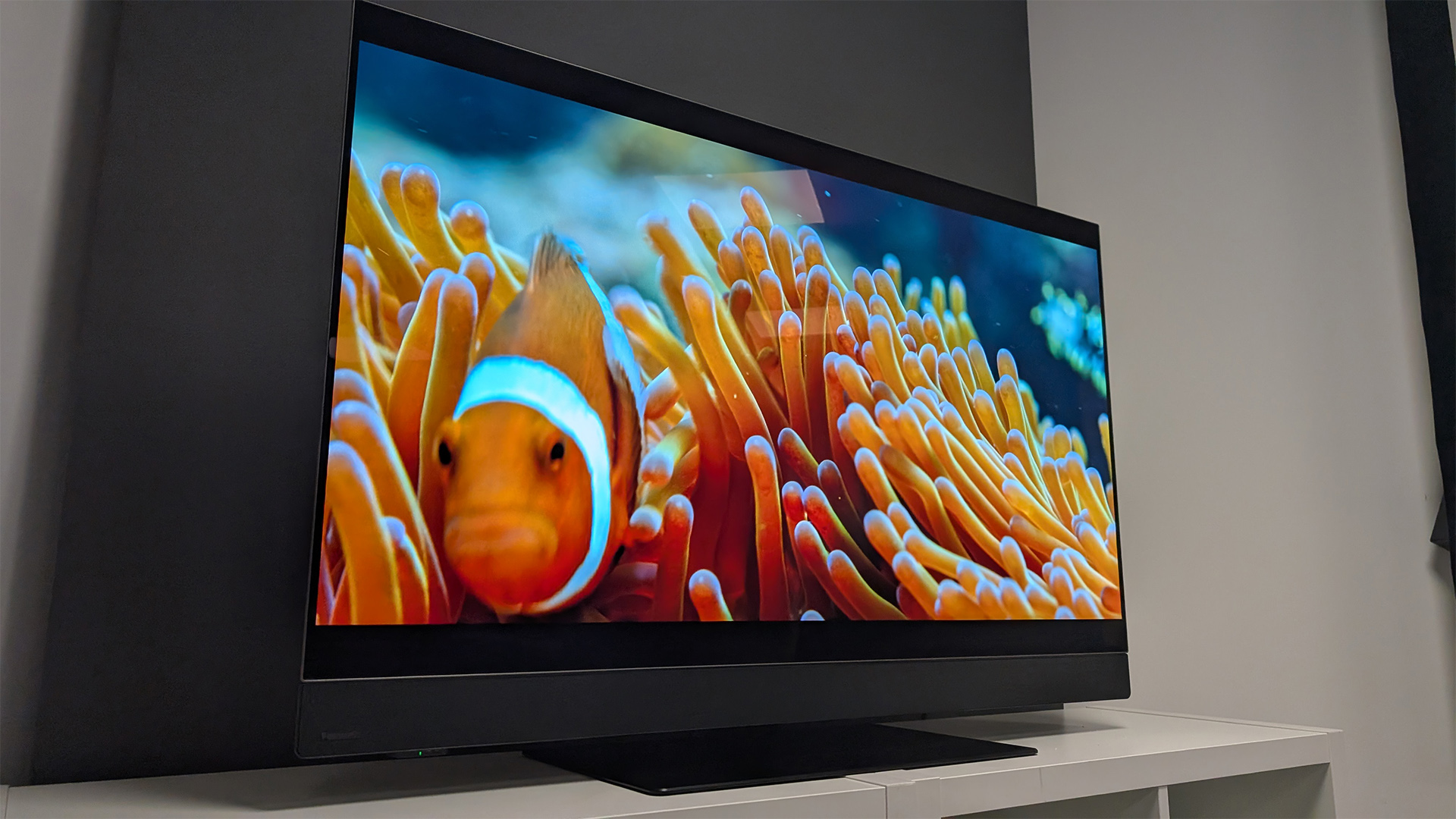
Both televisions prove that 48-inch OLEDs have reached impressive maturity, yet they appear to target slightly different audiences.
The Panasonic Z90B's focus on colour accuracy and directorial intent creates the most authentic cinematic experience available at this size. From sparkling desert dunes in science fiction epics, to cars thundering across race tracks, every scene looks wonderfully authentic and weighty.
Its heatsink also allows sustained brightness without the conservative tuning that hampers competing small OLEDs, while the speaker bar – frustrating as it may be for soundbar owners – delivers the best integrated audio at 48 inches.
However, there are some trade-offs. Just two HDMI 2.1 ports create headaches for anyone with multiple gaming devices and a sound system, requiring constant cable swapping.
The conservative approach to brightness also means some shadow details require more effort to discern than on brighter rivals, and SDR upscaling doesn't match class leaders.
If you want a 48-inch OLED and value cinematic authenticity above all else though, the Panasonic Z90B is currently the one to get. It prioritises getting the fundamentals right, and does so admirably.
The LG C5 makes a strong case through versatility. Four full-speed HDMI 2.1 inputs eliminate connection compromises, comprehensive gaming features (including Dolby Vision gaming support) cater to console and PC enthusiasts, and webOS 25 remains one of the most intuitive smart platforms available.
Picture quality, when properly calibrated, impresses across a wide range of content. That sparkle and pop in bright scenes, combined with OLED's inherent black level advantages, creates engaging images that most viewers will love.
But it requires work. Out of the box, the C5 tries too hard, and even after extensive settings adjustment, colour volume issues persist in darker skin tones.
Audio performance is distinctly underwhelming too, making a soundbar essentially mandatory. And while many users won't notice the picture inconsistencies, they exist for those paying close attention.
So which should you buy? If you prioritise picture accuracy, don't mind limited HDMI 2.1 connectivity, and want the best integrated sound at 48 inches, the Panasonic Z90B is the more accomplished option. It's the television for viewers who want to experience films closer to how their directors intended.
If you need four HDMI 2.1 ports, want extensive gaming features, prefer a brighter presentation, and already own (or plan to buy) a soundbar, the LG C5 makes more practical sense. It's the television for viewers who value versatility and all-around competence.
** Overall winner: Panasonic Z90B **
MORE:
Read our Panasonic Z90B review
Read our 48-inch LG C5 review
Best OLED TV 2025: 3 Award-winning sets recommended by our experts

You must confirm your public display name before commenting
Please logout and then login again, you will then be prompted to enter your display name.
